In this blog series, we will explore the new AT star, Amazon Echo. It was released November of 2014 with huge assistive technology (AT) promise. Amazon Echo is a hands-free speaker users control with their voice. Echo connects to the Alexa Voice Service to play music, provide information, news, sports scores, weather, and more. In the blog Amazon Echo Part 1: a consumer product with huge assistive technology potential, we discussed the device’s out of the box capabilities.
In this blog you will learn how Echo and IFTTT work together to make a powerful team. For those not familiar with IFTTT, it stands for If This Then That. It’s an incredible service that connects elements of your virtual and physical world to one other. Think of it like a train station where your favorite websites and tech devices connect with one another and exchange information to make life easier. There is a term for this ever growing intersect of technology and it is called the Internet of Things (IoT). It is the internetworking of physical devices, vehicles, buildings and other items – embedded with electronics, software, sensors, actuators, and network connectivity that enable these objects to collect and exchange data.
What does this all mean?
People can link their smart home devices and Echo to IFTTT and create recipes. By doing this, they can control multiple components of their home by simply asking Alexa. Here are a few different recipes people are using right now to control their devices:
Frequently lose your cell phone? No problem, ask Alexa to make it ring so you can find it!
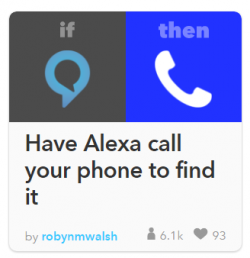
Simply ask Alexa to call someone through your cell phone. This recipe could be a life saver in an emergency situation.
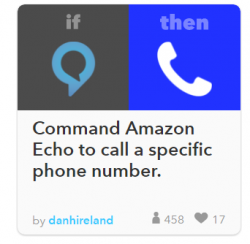 Alternatively, ask Alexa to text someone through your cell phone.
Alternatively, ask Alexa to text someone through your cell phone. 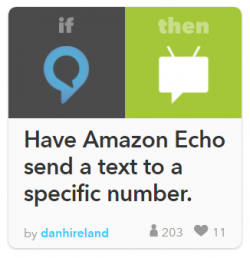 Ask Alexa to turn off any appliance you have plugged into your WeMo outlet. For example, plug a lamp into the WeMo and turn the lights on and off using your voice.
Ask Alexa to turn off any appliance you have plugged into your WeMo outlet. For example, plug a lamp into the WeMo and turn the lights on and off using your voice.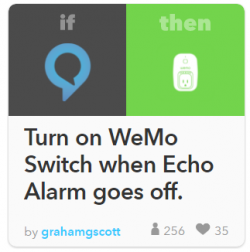 Change the temperature in your home through a simple request.
Change the temperature in your home through a simple request.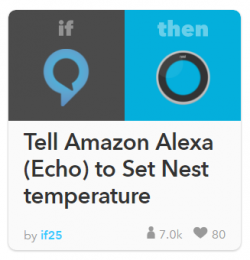 Control Lutron Home products like electronic window shades and lights through Echo.
Control Lutron Home products like electronic window shades and lights through Echo. 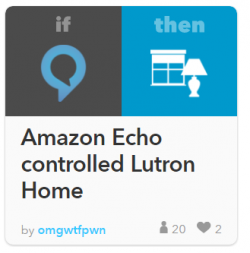 Control your home entertainment system, including changing television channels, through the Harmony Hub and remote.
Control your home entertainment system, including changing television channels, through the Harmony Hub and remote. Control the lights in your home!
Control the lights in your home!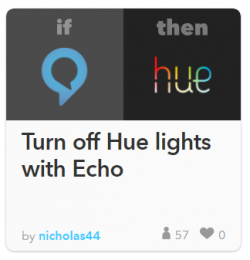
Interested in trying this out for yourself? Check out this how to video to see how to create recipes for Amazon Echo on IFTTT.

Good morning. Thank you for these posts. I work in voc rehab, and my coworker and I were just discussing the amazon echo yesterday. I look forward to the upcoming posts at well. I do have one question though. How does the echo compare to the echo dots? I read online that the echo dots have inferior speakers, but this would have very little impact on the AT possibilities. Are there any reasons why the echo would be preferable for clients over the echo dot? Thank you!
Great question! Like you mentioned, the main difference between Dot and Echo is that the full-size speaker is gone. The idea is users will hook Dot up to their own audio setup (via out jack or Bluetooth), so they can use Alexa with any existing speakers. This can be to a great advantage if someone wants to hook the Dot directly to their Bluetooth supporting hearing aid, personal headset, or if they would like the speaker in a specific location. Both devices have the same high quality Alexa Voice Service to play music, provide information, support smart home technologies, and more. I wouldn’t see any huge practical advantage to owning the Echo vs the Dot. In fact, in more cases the Dot might be the more customizable option. The only barrier the two may present is the individual’s personal acceptance of one device over the other, but that is going to be incredibly user specific and probably rare. Hope that answers your question!
Thank you!